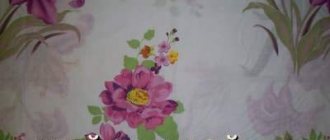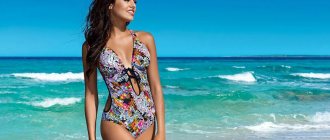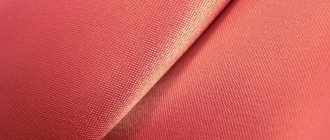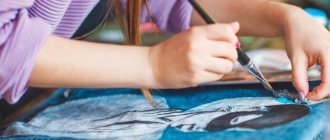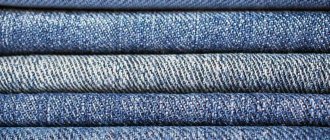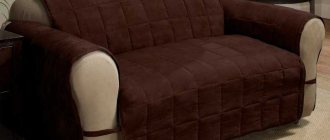Pants are a thing that is now worn equally by both men and women. Pants can be an element of a suit or an independent item of clothing. The design of the trousers requires that the fabric from which they are made drapes well and holds its shape.
The performance characteristics of trouser fabrics require that they do not wrinkle, fray, or pill. What materials are the most popular and in demand in the manufacture of trousers? This is discussed in the article. Let's get acquainted with the list of fabrics, their properties and care rules.
Linen trousers
Linen trousers are lightweight and comfortable. The fabric for their production is made from fibers of the fiber flax plant. Flax processing technologies make it possible to produce threads of different thicknesses. To sew summer clothes, including linen pants, combed flax is used; this yarn has a very small fiber diameter.
To make business suits, flax threads from tow (short fiber) are used; this fabric is denser.
Properties of linen fabric:
- naturalness and environmental friendliness of the material;
- strength and durability;
- breathability;
- high thermal conductivity;
- cannot be electrified;
- has bactericidal properties (contains silica, which inhibits the development of bacteria);
- does not require special delicate care.
Types of fabrics for trousers
What types of fabrics are there for trousers, their names and photos you will get acquainted with in this block.
- Wool tweed
It is more suitable for people with a thin build and tall stature, as it makes it slightly plump. The fabric retains folds. The new fabric has a shine that quickly disappears if the product is not ironed correctly. When sewing clothes and further care, you need to pay attention to this point. To avoid pin marks, trousers should be steamed using a lining. The surface of the material is textured, medium drape. The fabric holds wrinkles well.Advantages:
- maintains softness and elasticity;
can be used for demi-season clothing;
- has water-repellent properties;
- retains heat well.
- Artificial gabardine
This is a light and soft fabric. It is obtained as a result of twill weave of threads. It does not add volume, but folds may not be preserved. Pin marks and fold marks can be easily removed by steaming. To prevent the fabric from stretching, you need to give the material time to rest after ironing. The lining is not necessary. - Wool gabardine
The fabric has a rough texture, as it is based on tightly woven threads. Holds folds and shape well. It is usually used when sewing men's winter trousers; it has a high ability to retain heat. Visually slightly plumper. Does not tolerate ironing and may acquire an unwanted gloss. You can use hot steam to remove wrinkles or folds.
- Wool crepe
The surface of the material is granular. Signs:- holds creases well;
can be draped;
- has average dimensional stability;
- lining recommended.
- Linen suit fabric
Pants made from this material are light and comfortable. They lend themselves well to drape, but are slightly plump. The fold is poorly held and wrinkles quickly. Pin marks can be removed using steam. The fabric is prone to fraying; cuts must be processed before sewing.
Advantages of linen fabric:
- environmental friendliness;
high thermal conductivity;
- does not require complex care;
- not electrified.
- Woolen jersey, cotton knitwear
The main advantage is good drape and natural composition. When sewing, it is important to reinforce the middle seams with tape to avoid stretching of the fabric. Folds are not held. When worn, trousers made of this fabric wrinkle. The lining is installed only in the knee area. - Cotton twill, denim, poplin
These are representatives of cotton fabrics. They can add volume, hold their shape poorly, and retain folds. The lightness of the drapery is rated as average. - Viscose
Suitable for sewing trousers of any style. The material is delicate. There are a number of advantages:- high dimensional stability;
easy care;
- softness;
- preservation of the original color even after several washes;
- good drapability in folds.
- Velvet
Looks like velvet. Requires delicate care. If the soiling is heavy, you can machine wash it on a delicate cycle. In other cases, dry cleaning is preferred. It is characterized by high elasticity. Almost does not deform and does not shrink. - Silk
A very light and thin fabric with a smooth, shiny surface. Contains both natural and artificial threads. Usually silk is combined with viscose. Suits made from this fabric are light and pleasant to wear in the summer heat.
The weave of wool tweed is primarily twill, achieving a diagonal pattern. To obtain color effects, the fibers are processed and twisted in a special way, obtaining the following types of thread: melange, mulined, with colored knots.
Viscose is usually combined with silk or polyester for greater density.
You should read this!
Types of men's trousers: model, fabric, features of choice November 19, 2020
6074
6074
Checked trousers: what and when to wear for men December 17, 2020
4206
4206
Features of caring for linen fabric
Plain (fabric is not dyed) linen trousers are sewn in a machine on the “cotton” mode at a water temperature of up to 90 degrees. In cases of severe contamination, boiling of the product is permitted. Colored linen fabric is washed at 40 degrees. The detergent is used for this type of fabric; it should not contain bleaching components. Preparations containing chlorine have a destructive effect on tissue.
After washing, rinse in several waters - warm and then cold. Linen trousers are dried hanging on a line; it is advisable to do this in the fresh air, but not under the influence of direct rays of the sun. When removing dry linen clothes from the rope, you must immediately fold them carefully, so the fabric will not wrinkle .
Iron linen trousers with a hot iron on a special setting. The fabric will smooth out better if you moisten it with a spray bottle or place wet gauze on it.
What fabric to choose
Attention! The choice of fabrics for trousers must be treated carefully. An incorrectly selected fabric can cause allergies or discomfort when worn. Trouser fabric has different types, the most popular materials are presented below.
PVC
This material has a number of advantages:
- PVC is very dense;
- It is durable and elastic, does not tear even when wet;
- Yarn thickness is approximately 120 tex;
- Resistant to fire and chemicals;
- Can be worn at temperatures up to 90 degrees.
You may be interested in what fabrics are used for sewing swimsuits
These pants are often used for outdoor activities or sports.
Corduroy (cotton) Balenciaga
Traditional cotton corduroy material with Balenciaga elastane. Has various shades in its repertoire.
Twill fabric
The fabric is matte, a little like velvet. Linen structure inside. The material is elastic and does not wrinkle, holds its shape, and is also resistant to deformation. It hardly shrinks when washed. Such material needs proper care. It is better to use dry cleaning, if there is a lot of dirt, use only the delicate mode.
Twill (diagonal)
This material has double weave threads. It is very dense and durable, like twill.
The composition may include materials such as silk, cotton or wool. Most often, twill is made from equal parts cotton and polyester.
Classic pants
Double thread
Thanks to the rare weaving, the material is very durable. It comes in different types:
- Linen (the most famous type is called matting);
- Jacquard (with a large pattern);
- Sarzhev;
- Satin.
They are made using a special technology, two threads of linen are woven with two threads of weft. It is better to wear such products in summer or spring to allow the skin to breathe.
Artificial and wool gabardine
Very often, such fabrics are used to create outerwear. Made from wool threads. Only fine wool from Merino sheep is used to produce yarn.
Linen products
Their wool is much softer and more pleasant than that of ordinary sheep. Gabardine is sometimes made from man-made fibers or cotton. Gabardine pants require some care; hand washing is necessary to avoid pilling.
Viscose trousers
Viscose clothing occupies a large percentage of the consumer market. This material is not expensive, but has high performance qualities. Viscose trousers are comfortable to wear, pleasant to the body, and wear-resistant.
Viscose is made from natural raw materials – wood cellulose. It is crushed into chips and boiled in an alkali solution. The resulting mass is pressed into sheets similar to cardboard, and fiber and threads are produced from them.
Properties of viscose fabric:
- soft;
- pleasant to the touch;
- drapes well in folds;
- absorbs moisture;
- the fabric “breathes”;
- warms well;
- does not wrinkle;
- does not cause allergic reactions on the skin;
- washes well;
- Does not fade even after many washes.
Popular materials this year
It is better to make trousers for every day from light and breathable fabrics that do not wrinkle.
Corduroy for winter style
- For classic styles, it is better to take tweed fabric. Due to its density, it retains heat for a long time, so it is better to wear in the fall; it also easily repels moisture;
- Woolen materials are often used to make winter trousers. They are comfortable to wear and keep their shape perfectly;
- For summer pants, it is better to take thin materials like linen. They absorb water and allow the body to breathe, but they wrinkle very much, so constant ironing is necessary;
- One of the popular materials is denim (stretch). It has a high degree of stretch, hence the name. It is quite dense and can be of different colors; winter or summer styles of pants can be sewn from it;
- One of my favorite materials for pants is polyester. It is very cheap and well-permeable, allowing the skin to breathe.
PVC materials
Features of caring for viscose fabric
Viscose belongs to the category of delicate fabrics; caring for it is not difficult, but requires care. Wash viscose trousers using the machine’s “hand wash” and “delicate wash” modes. Use gentle detergents without chlorine components. Spinning for viscose is not recommended . After washing and rinsing, the item is wrapped in a towel. When the water is absorbed, it is laid out horizontally on a table covered with a dry sheet. Periodically, the trousers are turned over. You can iron viscose fabric with a warm iron through gauze.
Viscose
Viscose is not a natural fiber. This is a modern material made from recycled wood pulp. The main advantages are that the skin in it “breathes”, it feels soft and pleasant to the touch, and does not cause allergies, since it is based on natural fiber. It lends itself perfectly to dyeing, and with the addition of elastane it acquires firmness and elasticity, which helps to maintain its original appearance for a long time. We can say that bright suits and dresses, soft robes and women's viscose shirts will be worn for a very long time and will delight you with their appearance.
Silk trousers
Their silk trousers look very elegant. Silk men's suits are particularly elegant. In a woman's wardrobe, trousers made from this type of fabric can be both an element of an evening outfit and a casual one. They add femininity and luxury to the look.
Silk can be natural or synthetic. Natural silk is made from silkworm cocoons. A silk thread consists of twisted fibers in the amount of 5-8 pieces, their diameter is very small, so the silk thread is light and thin. There are many varieties of silk fabric, they differ in the way they are weaved: satin, satin, chiffon, crepe, gauze, organza.
Properties of silk fabric:
- shine;
- smoothness;
- good density;
- wrinkles slightly;
- easy to drape;
- cools the body in hot weather;
- washes well;
- soft to the touch and pleasant to the body.
How much fabric do you need for trousers?
Calculating the amount of fabric is one of the important stages in making pants. If you take too little, the product will be damaged; if you measure too much, you will have to hem it. Below is how much fabric is needed for men's and women's trousers.
Table of fabric consumption for different products
Men's
If the hip circumference is about 120 and the width is no more than 150 cm, the elements are folded into one length. Fabric consumption for trousers is calculated by the formula:
Pants length + 10 cm (for fit and allowances).
If cuffs are needed at the bottom, then another 10 cm is added. If the hip circumference is more than 100 cm, the cutting is done with a fold.
You might be interested in what grosgrain ribbons are used for and what they are
Women's
The layout of trouser patterns on the fabric with a hip circumference of up to 100 cm, with a width of 140 cm is done in one length. Fabric for summer trousers for women is calculated using the formula: trouser length + 10 cm.
If cuffs are needed, then another +10 cm. If the hip circumference is more than 100 cm, then it is necessary to cut with a shift.
Women's office style
Attention! Children's pants are much easier to cut; a 100 cm piece of fabric is enough.
Features of caring for silk fabric
Silk is a delicate fabric and requires careful care and wear. Wash silk items in warm water (no higher than 30 degrees) using special products for this type of material. The machine wash mode is “hand wash”, “delicate wash”, “silk”. Squeezing in a machine is not recommended. Washing by hand is carried out with light kneading movements; you cannot rub or crumple the product, as this will deteriorate the structure of the silk fabric.
To make the silk shine, add a little table vinegar to the last rinse water. Silk trousers should be dried by laying them flat on a towel away from direct sunlight. Iron this type of fabric from the wrong side using a special mode. Stains from water and other liquids remain on silk; it is advisable to wash them immediately after they appear. It is undesirable to use stain removers in silk care; they destroy the structure of the fabric and can lighten the material .
Cotton
Cotton is a natural fabric of plant origin. It is made from the seeds of the cotton plant. In Russia, such fabric is often called cotton (cotton fiber), and the international name is cotton. It contains cellulose (95-96%), so cotton is the most environmentally friendly fabric. It is breathable, hypoallergenic, pleasant to the touch, comfortable to the body, quite warm, absorbs moisture well, bleaches easily, and does not electrify.
With the help of special weaves of threads from cotton fibers, materials of different thicknesses are obtained - interlock, flannel, mako, cambric, terry, from which they make comfortable home clothes.
However, cotton also has its disadvantages: it wrinkles easily, may shrink after improper washing, and dries slowly. Therefore, sometimes artificial fibers such as polyester or elastane are added to its composition. They neutralize these properties and help preserve the appearance for a long time.
Jeans
Jeans or denim is a very popular fabric for trousers; it is distinguished by its density and stiffness. The material is made from cotton with the addition of elastane or lycra, which makes the dense fabric comfortable to wear. The blue-blue color of denim fabric, familiar to each of us, is obtained under the influence of a special “indigo” dye.
Denim for sewing trousers can be of several types: broken twill, gin, stretch, ecru. They differ in the thickness and density of the fabric, and the way the threads are intertwined.
Properties of denim fabric:
- dense;
- wear-resistant;
- retains heat well;
- wrinkles slightly;
- passes air through itself;
- does not change structure and color after repeated washings.
For women and men
Let's figure out what fabric trousers are made from - we have a huge choice, both offline and on the Internet. You need to make the right decision and choose the perfect fabric that will become a wonderful wardrobe item under skillful hands.
First, let's talk about which options are best for wearing in the warm season.
Twill
An excellent fabric for twill trousers - thanks to its special weave, it has a textured surface with a slight elegant shine. Made from cotton with the addition of synthetic threads.
- Very durable and wear-resistant;
- Easily allows air to pass through, the skin breathes;
- Retains dust;
- Completely wrinkle-free;
- Does not stretch or shrink, does not deform when stretched;
- Very easy to care for;
- Dries quickly, repels moisture;
- Does not fade in the sun.
Are there any disadvantages? The material may cause allergies if it contains synthetics.
Linen
This is an incredibly popular fabric for summer pants - you can find such pants in almost every wardrobe. What's good about the material?
- High density with a fairly thin structure - it will not be hot;
- Absolutely natural, forget about allergies;
- Quite strong and durable;
- Provides good air exchange.
Linen pants look simply incredible - stylish and expensive. But there is a drawback: they wrinkle easily, but it’s quite difficult to smooth out the wrinkles. Here's more about her https://xtkani.ru/len/
Staple
Another answer to the question of what fabric to make summer trousers from. This is a simple matter that everyone will like:
- Thin and soft;
- The staple easily absorbs moisture and drapes perfectly;
- Huge selection of colors;
- Durability of the pattern under sunlight.
Among the disadvantages is that the fabric wrinkles easily and does not last as long. But quite cheap!
Denim
Don't forget about the classic option - denim pants will suit everyone. Take thin denim, which is characterized by breathability, gyroscopicity and complete hypoallergenicity. Pleasure!
And below you will find recommended materials for classic women's (and men's) trousers, which are suitable for wearing in the demi-season, during the cold season.
Velveteen
This fabric has a pleasant velvety texture and holds its shape perfectly. Valued by customers for:
- Excellent elasticity;
- No shrinkage;
- Ability to keep warm.
The downside of corduroy is that it is quite difficult to care for and cannot be machine washed.
Tweed
One of the most attractive materials in appearance - it looks very expensive and dignified. Is different:
- Softness;
- Excellent heat saving;
- Excellent water-repellent properties.
Tweed fits well, but is not always suitable for larger people.
Wool jersey
This material for trousers holds its shape perfectly, practically does not stretch and is very easy to care for - which is why it is popular when sewing business suits. Contains cotton and wool threads with the addition of synthetics. Read a separate article about jersey material.
We have chosen the fabric for men's trousers and women's pants - let's start cutting and sewing!
Features of denim care
Jeans should be washed inside out. For washing, powders and conditioners for this type of fabric are used. Machine washable on delicate cycle. It is not advisable to wring out; it is better to leave the trousers so that the water drains. Denim shrinks a little after washing .
After rinsing and spinning, it is recommended to lay out the item and stretch it slightly with your hands, giving it the desired shape. Ironing for denim items is not necessary, but you can iron them from the wrong side by moistening them with a spray bottle.
Modal
Modal is a modern biomaterial of a new generation of European level. Made from cellulose extracted from eucalyptus, beech or pine trees. There are no substances containing chlorine in the composition, that is, it is an almost natural product that is gladly purchased by those who monitor the environmental purity of the material. The unique characteristics of this fiber are actively used in the manufacture of high-quality and luxury collections of clothing for home and sleep. Products made from modal are light and at the same time have a high density, do not wrinkle, are soft, silky to the touch, and have a noble shine.
The fabric is hygroscopic - it absorbs liquid well and quickly removes it out, does not cause irritation, and is completely hypoallergenic. Modal fibers are often added to cotton, which makes cotton clothes soft, pleasant to the touch, and provides them with vibrant color that does not change over time.
